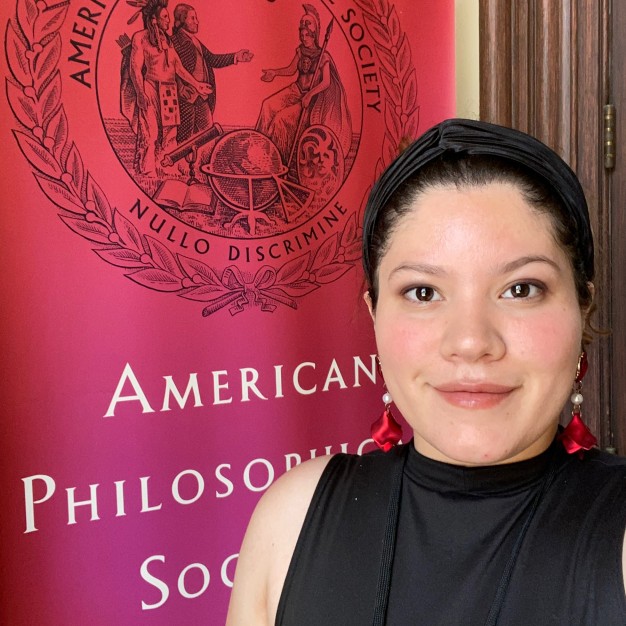Interning at the APS during a Global Pandemic: A Colorful Experience
By Verónica Ivette Mercado Oliveras, Willman Spawn Conservation Intern
Verónica Mercado Oliveras, a Mellon Library and Archives Conservation Education Fellow in the Winterthur/University of Delaware Program in Art Conservation, spent the summer of 2021 interning in the APS Conservation Laboratory
As a Puerto Rican Library and Archives Conservation major in the Winterthur/University of Delaware Program in Art Conservation (WUDPAC), I considered my first graduate summer internship—one of many requirements to obtain the M.S. in Art Conservation—a high point of my education and an opportunity to build a new, long-lasting relationship with a mentor. However, by the time I was offered the Willman Spawn Conservation Internship, it seemed likely that the only safe option for an internship would be a virtual one. Needless to say, I was ecstatic when Renée Wolcott, Assistant Head of Conservation and Book Conservator and my soon-to-be supervisor, bore the good news of a fully in-person internship at the APS. “En vivo y a todo color,” as we say in Puerto Rico: live and in full color.
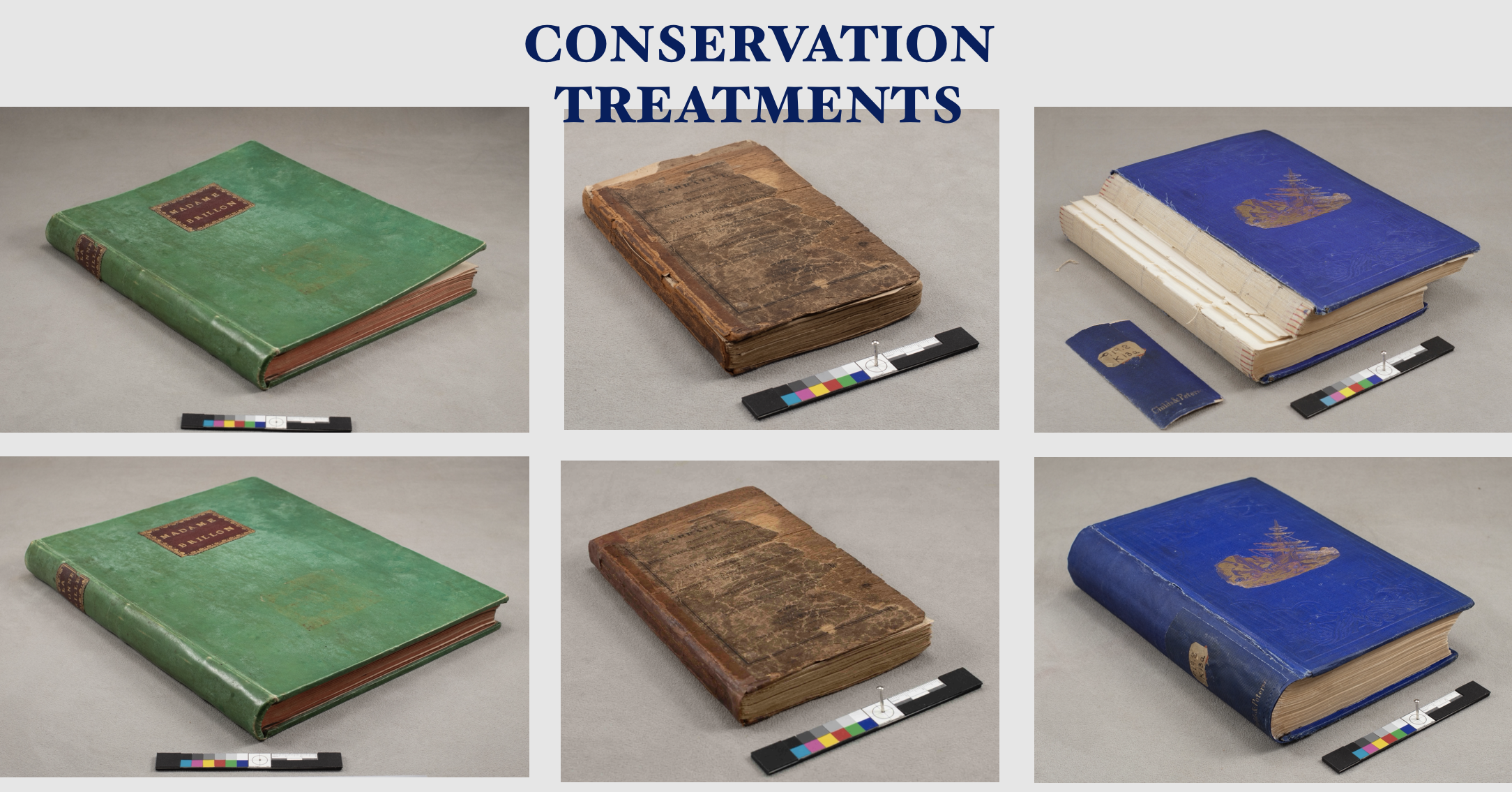
When I was presented with my projects, I could not believe my eyes. Three oddly colorful books lay on my workbench: a full green parchment case binding that had suffered from the impact of fluctuating relative humidity, a blue cloth case binding with a detached spine piece and a split text block, and a scaleboard binding with thin wooden boards and burnt pages! Whenever I think about libraries, I envision infinite stacks of earth-toned books bound in leather, paper, and cloth, but these books had both color and a wide array of organic materials! I knew that I was about to access a new bank of information, not only regarding book structures, but also materiality, decoration, and physical condition. I had never heard of the books before either; all of them contained stories of men and women to whom I had no prior connection, including the 18th-century French composer Anne Louise Brillon de Jouy, a Revolutionary War soldier named Joseph “Plumb” Martin, and the 19th-century physician-cum-explorer Elisha Kent Kane.
The Willman Spawn Conservation Internship greatly enhanced my understanding of book conservation. In the Conservation Laboratory, I worked with Renée on the condition assessment, photography, and treatment of a parchment-bound Piccini opera from the collection of Mme. Brillon, a cloth-covered trade binding containing Kane’s story of the 1853-55 Grinnell Expedition to the Arctic in search of missing explorer John Franklin, and a scaleboard binding with veneer-thin wooden boards containing the experiences of a private in the Continental Army.
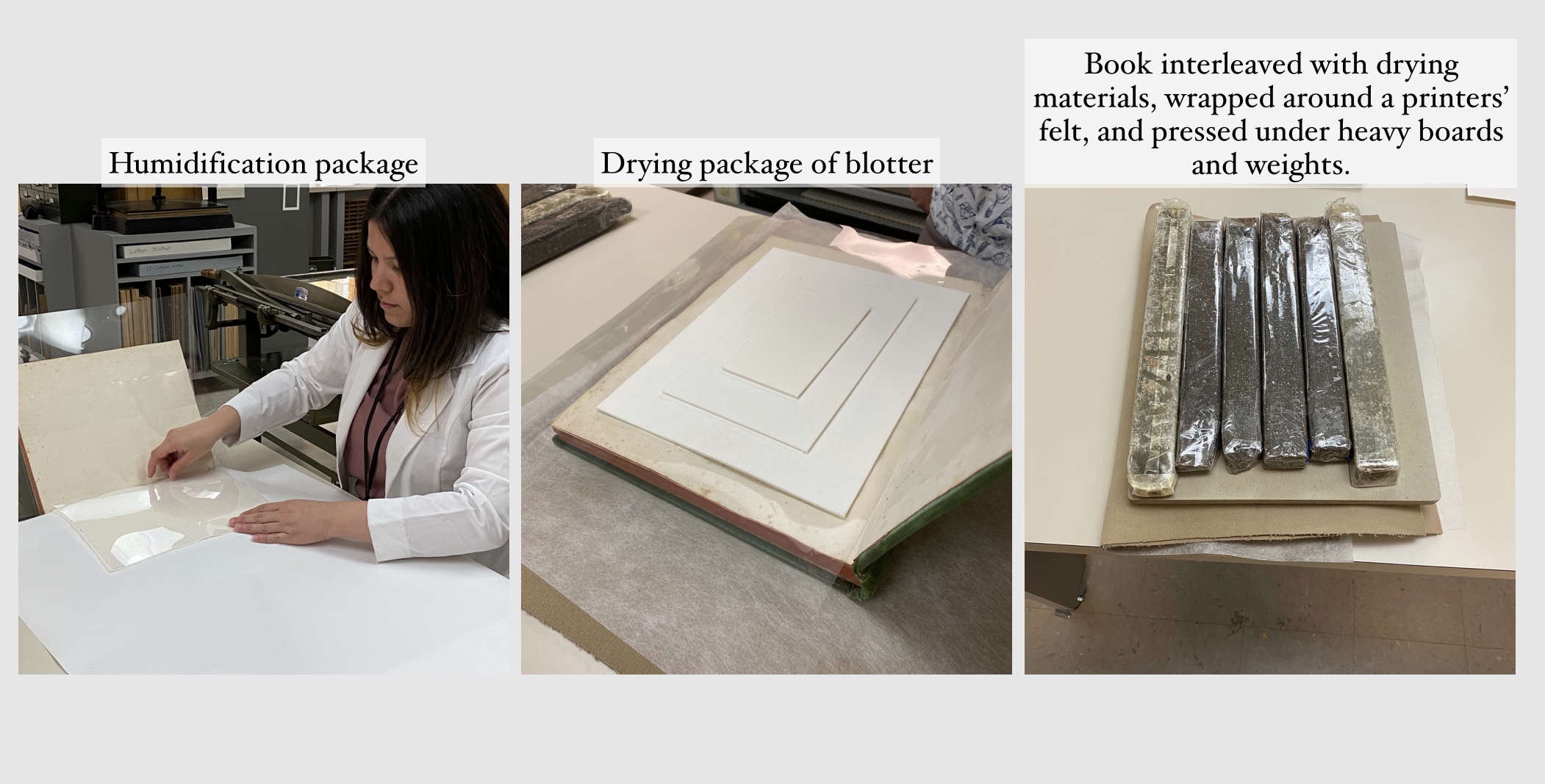
Madame Brillon’s green parchment-over-boards binding was highly reactive to changes in relative humidity. This caused the parchment covering to contract, warping the upper board into a concave shape. A humidification package was devised to allow for the controlled release of water vapor into the parchment, consequently allowing the cover to be flattened under weights.
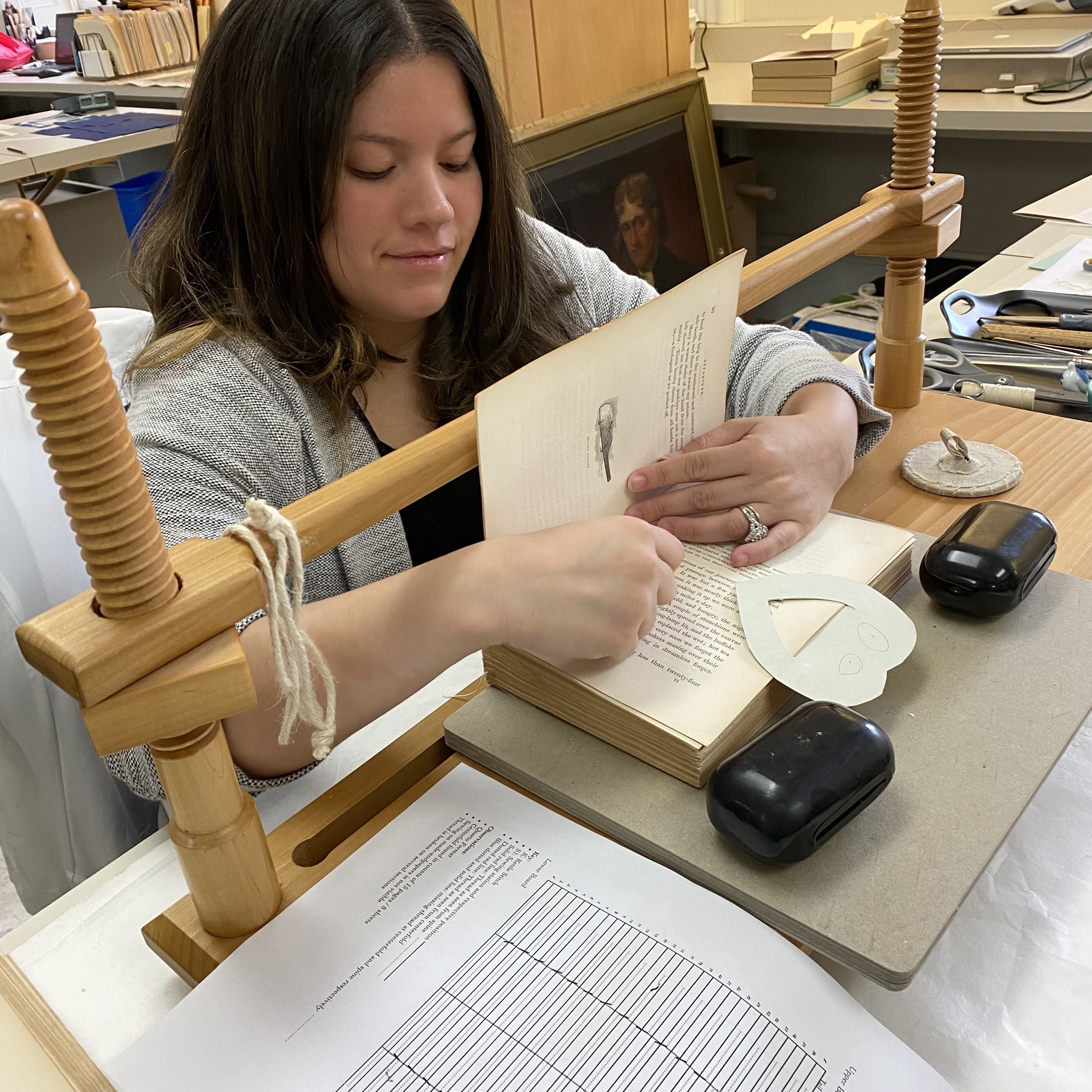
The second project, a blue case binding that Kane himself had presented to the APS, had lost half its spine. The text block had also split in half. After examination and testing, Renée and I ultimately decided to re-sew the text block with new thread and sewing supports and to reback it with richly toned blue long-fibered mulberry paper.
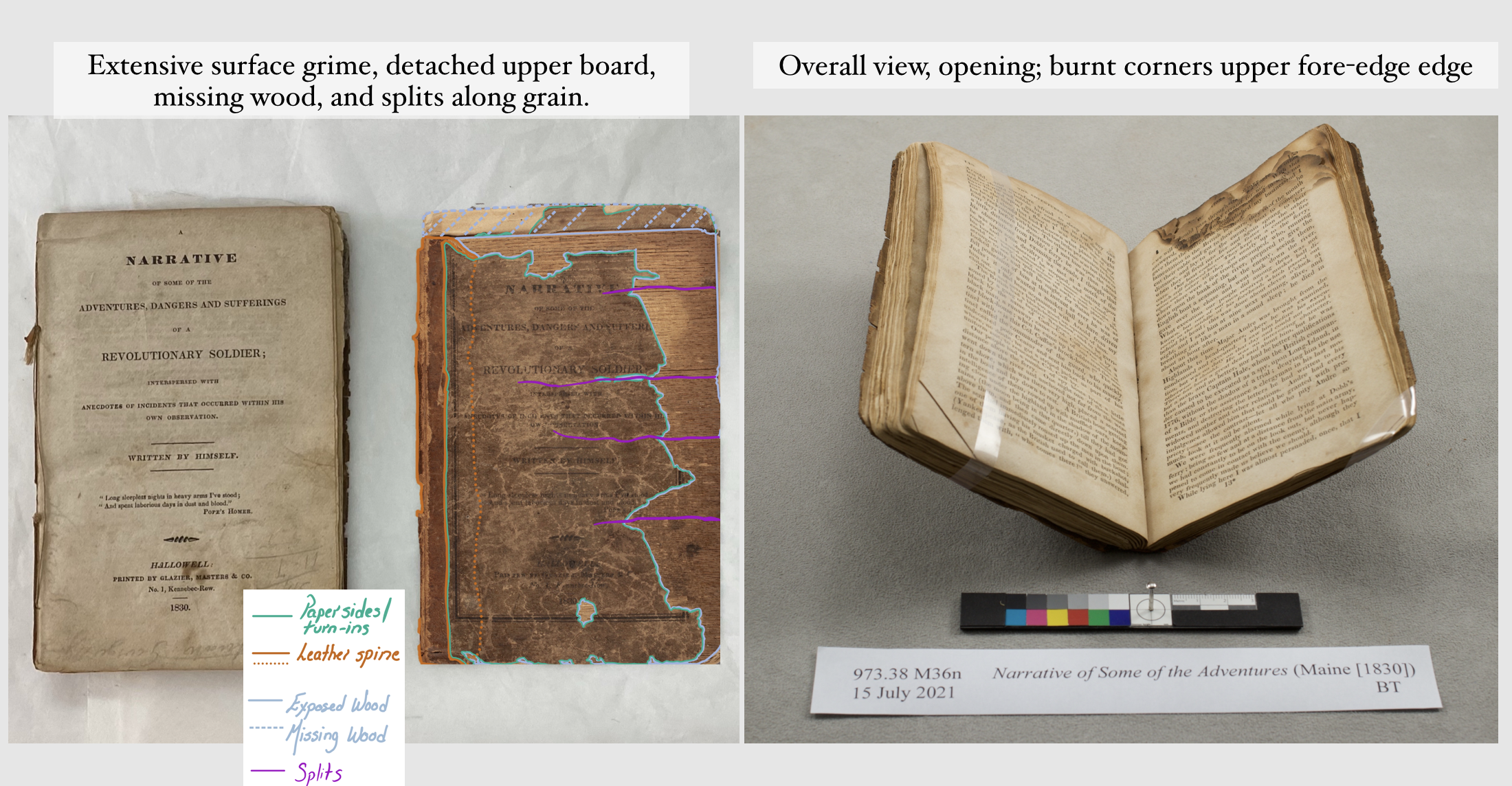
The scaleboard binding had suffered losses to its wooden boards and burns to some of its pages; we decided to consolidate the boards to re-establish their structural strength and to mend the burnt pages to keep the carbonized paper matrix from disintegrating into ashes. After six weeks of studying and treating these books, I had learned a great deal about their structures and was enriched by the authors’ stories and life experiences—another great pleasure of being both a History major and a Library and Archives Conservator in training.
Thanks to Renée, who is not only an expert in the field of book conservation, but a writer, editor, and teacher—she also speaks Spanish—I left the APS equipped with a stronger set of critical thinking and manual skills to successfully transition into my second year of book conservation studies at the Winterthur/University of Delaware Program in Art Conservation.

